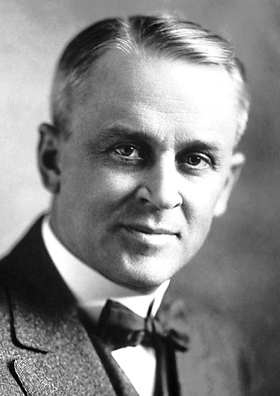The Photoelectric Effect
The Photoelectric Effect
Eureka!
Robert Millikan1 was an experimental physicist contemporary with Albert Einstein. He gets mentioned at dinner parties and classrooms for his famous oil-drop experiment, which determined the value of the charge of an electron, e = 1.6 × 10-19 C. Millikan published his findings and other physicists accepted them circa 1913.
Prior to this oil-drop experiment, it was thought that charge could be anything at all on some continuum. Instead, this experiment showed that charge is quantized: it comes in discrete (and equal) quantities. This firmer understanding of the electron enabled the settling of a few debates concerning its nature.
The very next year Millikan published a paper about research with which he had intended to disprove the photoelectric effect2 theorized by Albert Einstein back in 1905.
We've studied Einstein's theory of relativity published in 1905, too, because it's the coolest, but another equally groundbreaking paper, which led to Einstein's receiving the Nobel Prize in 1921, concerned the creation of free electrons from a metal surface when exposed to light (energy) AKA the photoelectric effect.
As a side note, Einstein never did receive a Nobel Prize for his work with relativity because he died before its effects were proven experimentally. He was ahead of his time in that regard. Get it? Relativity? Ahead of his time?...
Millikan, in 1916, like the other physicists of his day, knew light to be a wave, not a particle, from the Michelson-Morley experiment. Though previous studies had verified the existence of a photoelectric effect and the particle nature of light, Millikan wasn't certain they were rigorous enough to rule out the possibility of error.
Millikan hypothesized that no emitted electrons would occur if the photoelectric effect experiment3 were done properly, and he was just the man to do it. He dutifully performed his experiment in a vacuum so nothing in the air could alter or enhance the creation of a current, and just imagine his surprise when he proved the photoelectric effect to be real, instead!
Oh, the irony.
Millikan's work enabled Einstein to receive a Nobel Prize in 1921 for the very experiment he thought would disprove Einstein's theory on the photoelectric effect. As a consolation, a mere two years later, Millikan received the 1923 Nobel Prize himself for his work in determining the charge of an electron and his work in proving the photoelectric effect correct.
Let's take a look at the experiment, shall we? It would have been something like the image below. The light doesn't necessarily have to be blue or ultraviolet or any particular color, but it does have to be monochromatic: of one frequency and wavelength.

The real proof is in the math. Millikan took Einstein's theorized equation relating to the kinetic energy of the emitted electrons, K = hf – P where K is the kinetic energy of the electron, h is Planck's constant, f is the frequency of the light shown on the metal, and P is the amount of work (energy) required to extract an electron from the metal. Planck's constant of h = 6.626 × 10-34 J∙s had been determined by Max Planck circa 1900, as a quantity central to quantum physics because it relates the energy of light to its frequency, E = hf and the wavelength of light to its momentum, p = \frac{h}{\lambda}. And guess what? Millikan verified its value though his photoelectric experiment. Not only was the photoelectric effect true, so was quantum physics.
Each term within the equation proposed by Einstein, K = hf – P, refers to amounts of energy. The kinetic energy of an emitted electron, K, would be zero if an only if the energy of the incoming light were equal to the work required to extract the electron from its given metal.
The equation also means that if the light directed at a metal had too low of a frequency, no electrons would leave the metal, no matter how many light particles, photons, hit it. Therefore, not only are electrons quantized, but photons. Yup, Millikan really wasn't expecting that. His work led to the development of the wave-particle duality view of light.
This photoelectric effect is used to study all sorts of metals and find how tightly their electrons are bonded to the atoms to which they belong.
In conclusion, Robert Millikan is an experimental genius, while Albert Einstein is a theoretical one.
